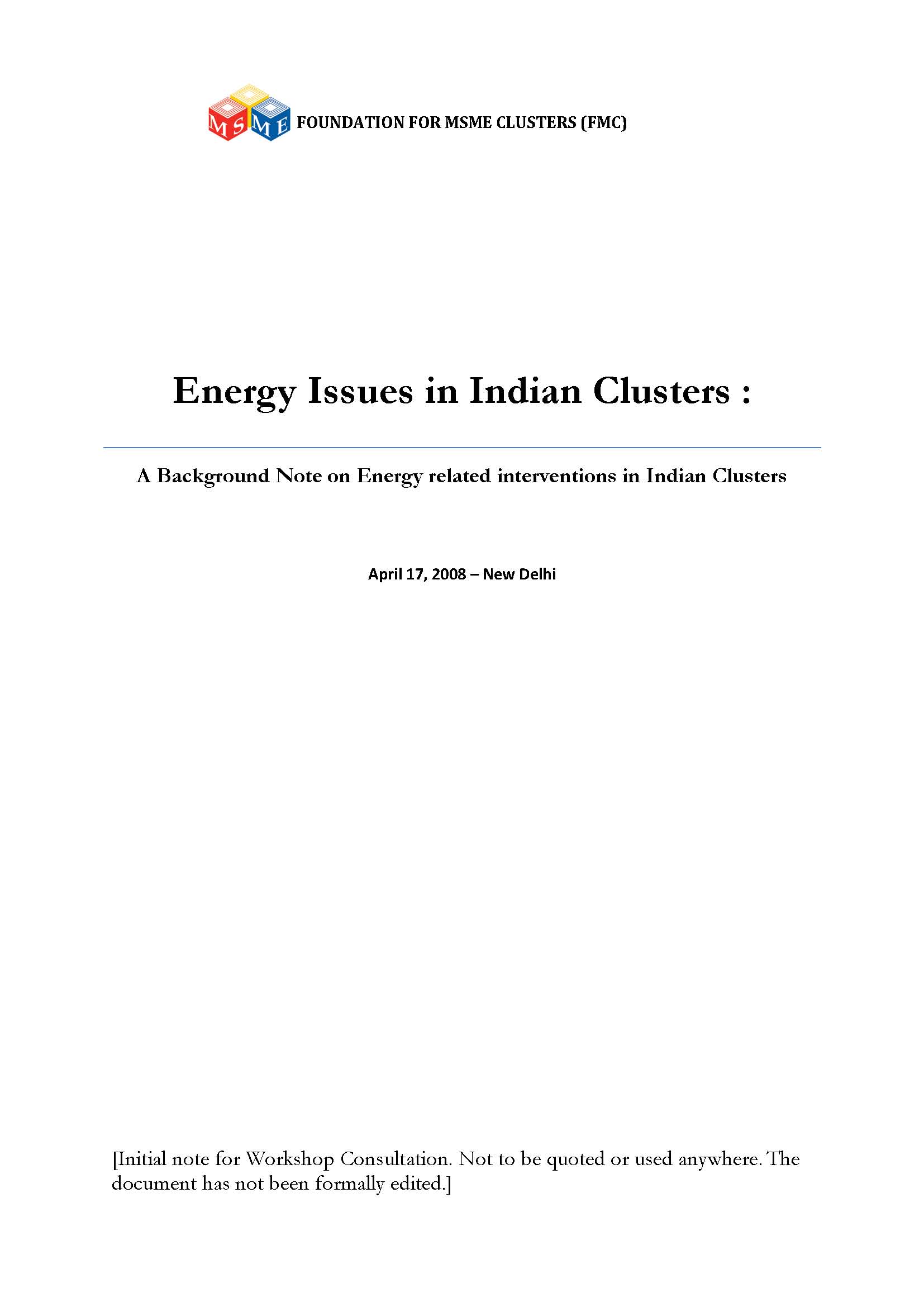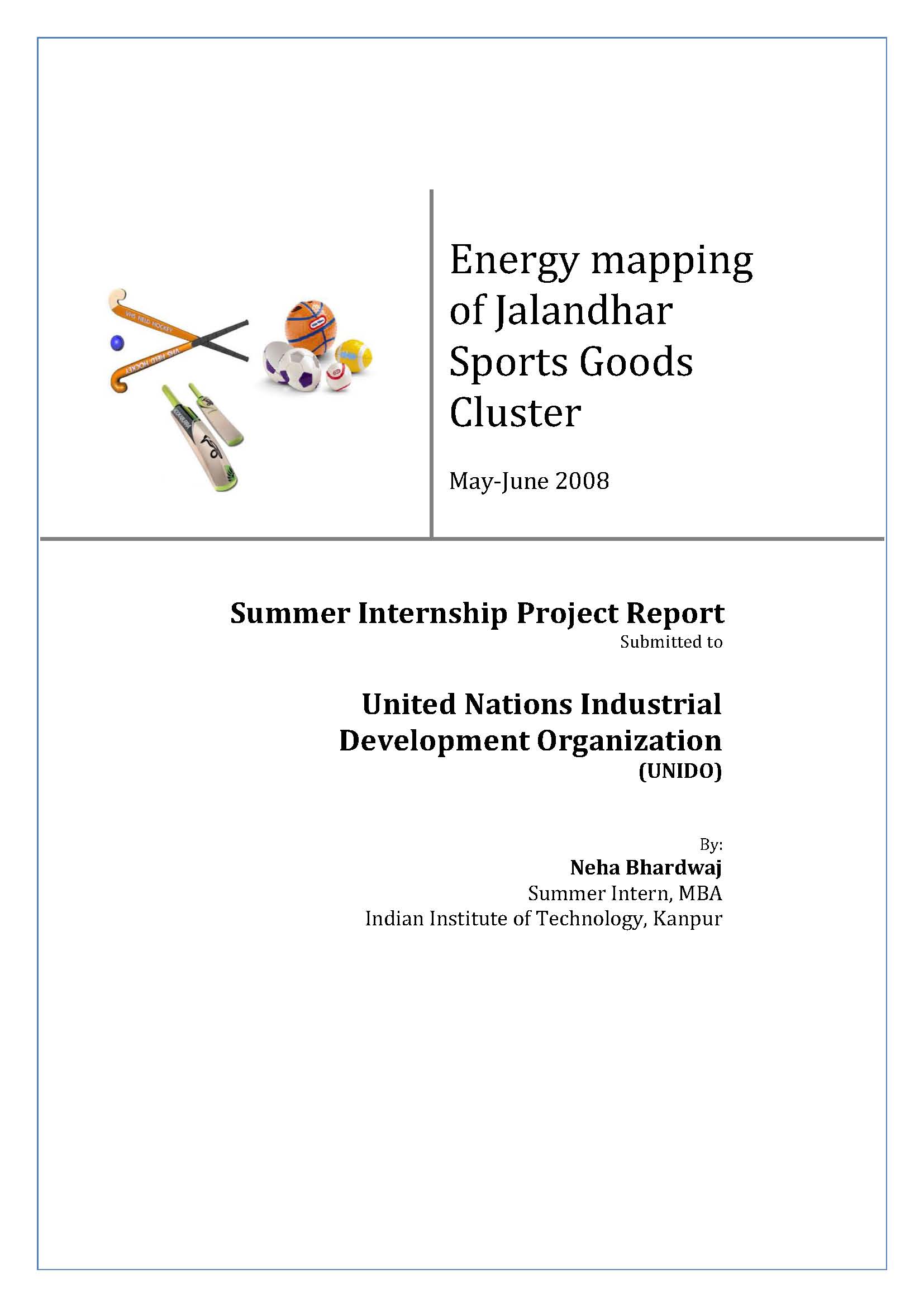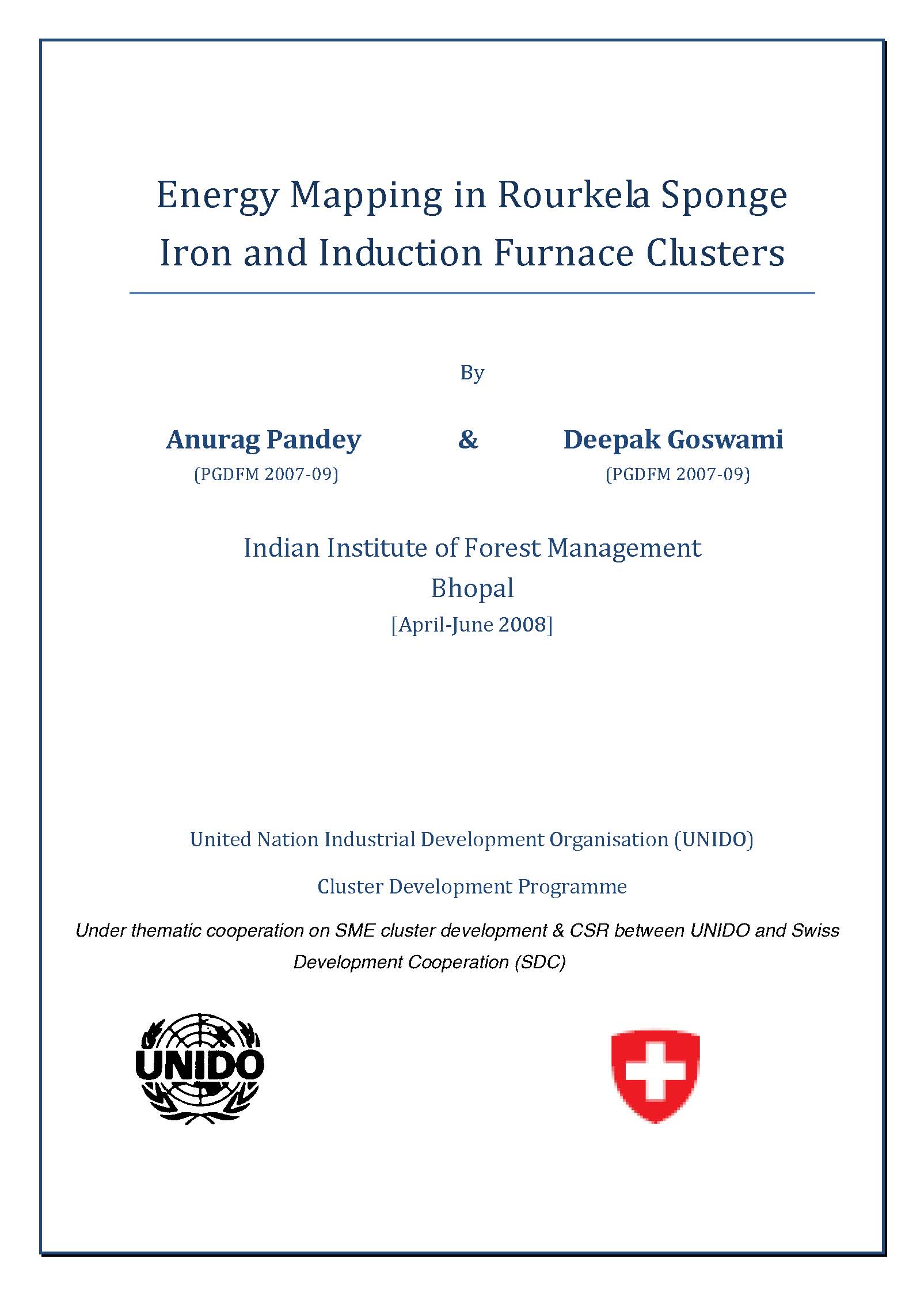
A Background Note on Energy related interventions in Indian Clusters
There is interaction among energy, environment and sustainable development in an economy. As most of the environmental problems are associated with energy use and economic development without energy use is difficult, there is an “energy trilemma” involving energy consumption, economic development and environmental impact (Khan, 1992). Industry has emerged as the major energy-consuming sector in India as well, with a share of about 42% of the total energy consumption (Reddy and Balachandra, 2003). From the clusters’ perspective the maximum energy intensive industries are the part of traditional manufacturing clusters and some of the prominent energy intensive clusters include Foundry, Glass and ceramics, Electroplating, Rubber and Plastic, etc.
As there is no macro level information available to map the energy utilisation of MSME Clusters, analysis for the entire MSME sector is being presented to understand the scenario. The data also suggests that energy source in the MSMEs is dictated by availability, price, reliability and convenience of use and not much on environmental considerations.
Published by: FMC
Year of publication: 2008
Number of pages: 19
Download:PDF

To map the energy usage of the Jalandhar Sports goods cluster. In the process data has been collected about the actual requirement the cluster has, deficits it faces, how it meets these deficits, what is the cluster’s expected energy requirement for the coming years and what are its investments in renewable sources of energy or innovations in the fields of energy. Recommendations have been made which firms can implement to achieve energy efficiency thereby resulting in financial savings.
Published by: FMC
Year of publication: 2008
Number of pages: 72
Download:PDF

In the current situation of India, energy availability and consumption is prime concern. In many parts of the country the energy Demand-Supply gap has been increasing consistently. The industrial sector accounts for nearly 42% of the total Energy consumption in the country. Hence, to bridge the Energy Demand – Supply gap it is very important that serious efforts are put in the direction of “energy conservation”. It has been observed that there lies a great potential of Energy Conservation in the SMEs clusters, which can be utilised by enhancing the “Energy Efficiency” of these units. The study enables us to find out the energy consumption pattern of a given SME cluster and possible Energy Efficiency measures to minimise the energy wastage. This study deals with the issues of energy consumption and conservation only.
Published by: FMC
Year of publication: 2008
Number of pages: 63
Download:PDF

This book focuses on cluster development as a possible strategy to reduce poverty in India, where clusters already exist and poverty is widespread. “Policy interventions” to promote poverty reduction through cluster development has been clearly defined. Attempt has also been made to estimate the resource requirement to promote such clusters in India.
Published by: FMC
Year of publication: 2008
Number of pages: 58
Download:PDF | Policy Suggestions